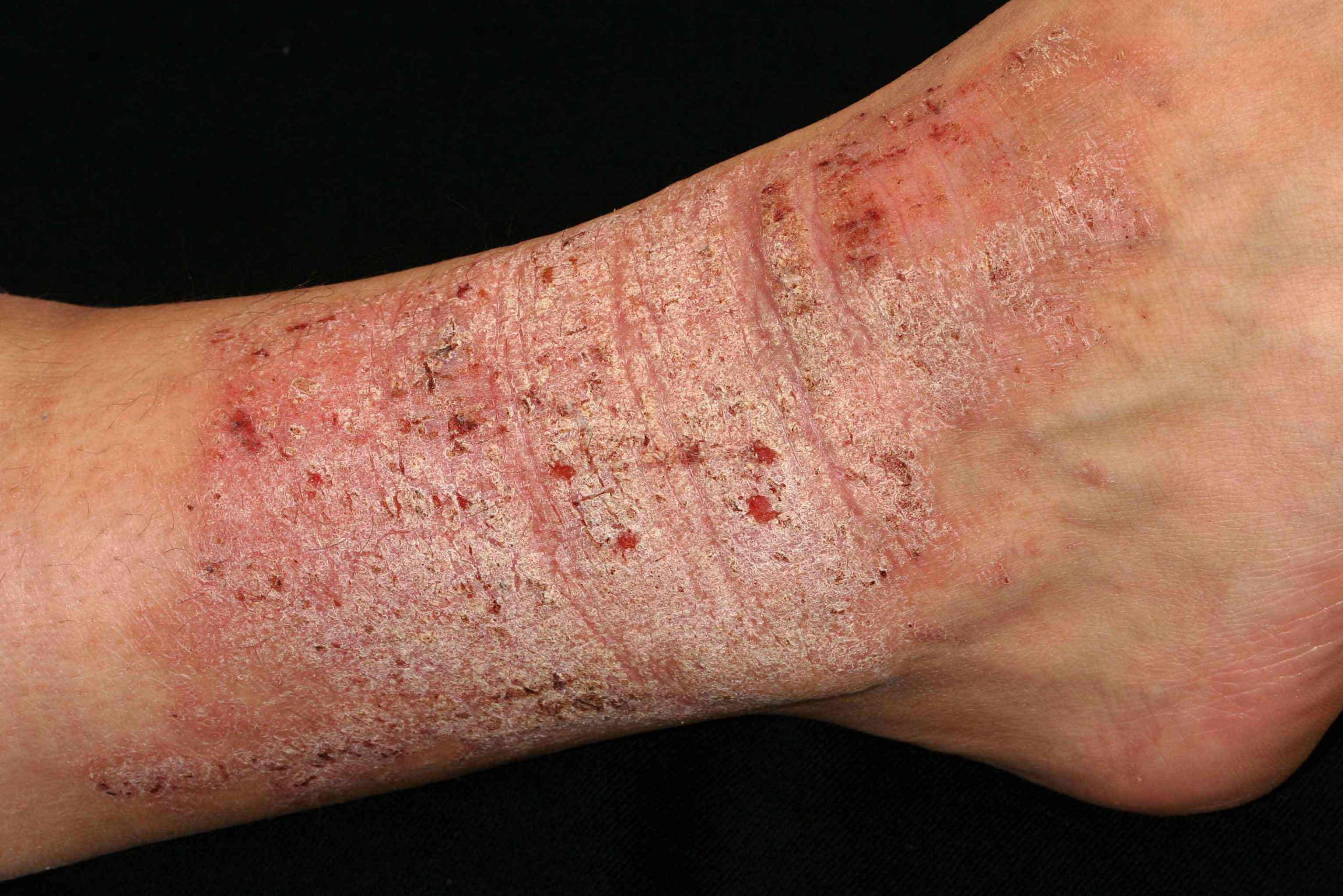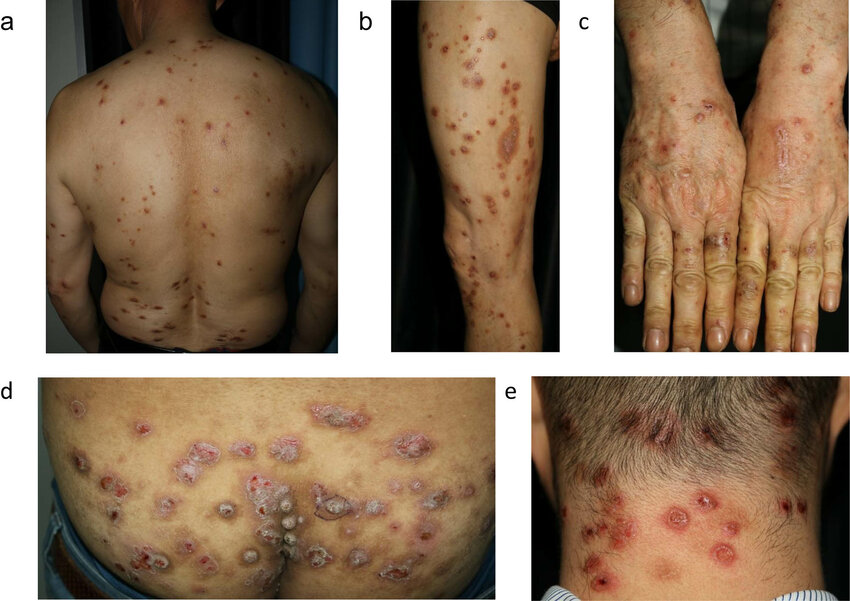
Lichen simplex chronicus
Localized area of skin becomes thickened and leathery (lichenified) due to chronic
rubbing, sometimes a stress-related habit. Tends to favour the calf, nape of the neck,
vulva, and perianal skin.

What should I do?
• Take scrapes from scaly lesions to exclude a dermatophyte infection, and swab the
genital skin to exclude candidiasis.
• Non-genital skin: apply a superpotent corticosteroid ointment bd, or use under occlusive
hydrocolloid dressing, e.g. DuoDERM®. Dressings protect itchy skin from fingernails
and can stay in place for 4/5 days, after which corticosteroid ointment is reapplied under
a fresh dressing. Continue treatment, until the skin has flattened and the itch has settled.
• Genital skin: treat with potent corticosteroid–imidazole ointment for 2 weeks, and then
step down to a weaker corticosteroid–imidazole combination to reduce the risk of
atrophy. Use aqueous cream as soap substitute.
• Consider patch testing in genital lichen simplex.
Prurigo nodularis
Chronic form of eczema characterized by intensely itchy nodules. Pathogenesis poorly
understood; 80% of patients have a personal or family history of atopy. Patients may
report nodules appearing before the skin feels itchy, but, if the skin is occluded, nodules
flatten.
What should I look for?
• Middle-aged or older patient with excoriated, firm, erythematous nodules, 1–2cm in
diameter, usually symmetrically distributed on the extensor aspects of the limbs and the
upper back. Numbers vary from a few to hundreds.
• Post-inflammatory hyperpigmentation or scarring.
• Normal skin in the centre of the back (difficult to scratch).
What should I do?
• Explain that it is difficult to find the cause of itching … and to treat.
• Explain that the changes are 2° to scratching.
• Exclude systemic causes of itch—renal failure, chronic liver disease, malignancies,
psychological/psychiatric conditions, HIV, drugs.
• Exclude scabies.
• Attempt to break the itch–scratch cycle with a very potent corticosteroid ointment
applied under occlusion.
• Recommend emollients and anti-itch creams such as crotamiton lotion or menthol 1% in
aqueous cream.
• Consider a course of UV light (UVB).
• Consider sedating antihistamines or a small dose of amitriptyline (10mg) at night.